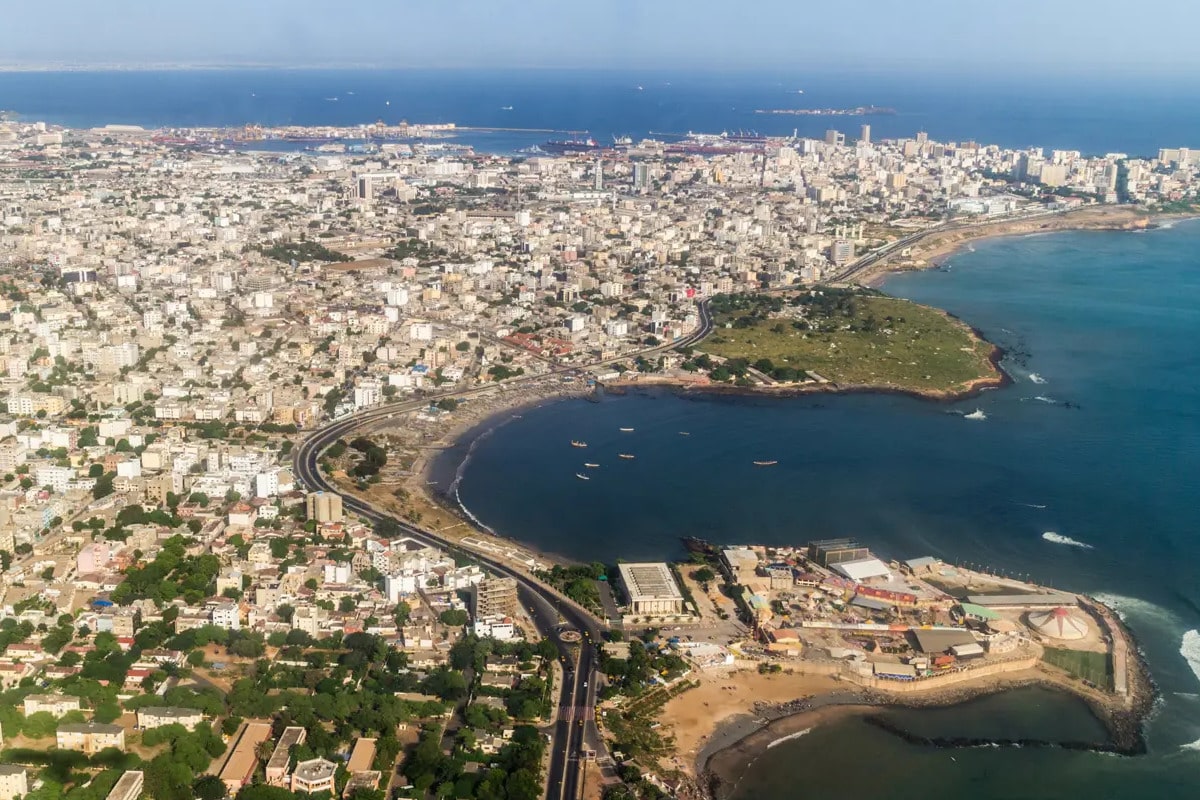Dakar is not just the capital of Senegal but also a symbolic gateway to West Africa, rich in history, culture, and unique geography. The city is full of contrasts between colonial heritage and modern trends, traditional African lifestyles and global influences. Located on the Atlantic Ocean, Dakar is the westernmost capital of mainland Africa, which makes it a vital hub for trade, fishing, and transportation. The city exudes an atmosphere of freedom, art, and national pride. Below are some interesting facts about Dakar you might not know, but that will help you discover this remarkable place more deeply.
- Dakar is the westernmost capital on the African continent, making it the furthest westward point of mainland Africa. Its geographical position has played a crucial role in shaping its historical importance in trade and navigation.
- One of the tallest monuments in Africa, the African Renaissance Monument, stands in Dakar and measures 49 meters in height. It is taller than the Statue of Liberty (excluding the pedestal) and symbolizes a new era of pride and progress for the continent.
- Just off Dakar’s coast lies Gorée Island, once a major hub in the transatlantic slave trade. Today, it is a UNESCO World Heritage Site and a powerful symbol of remembrance for African slaves.
- Dakar’s streets are known for their colorful minibuses called “car rapide”, decorated with intricate patterns, religious phrases, and pop culture motifs. These vehicles are more than just transportation — they are a vibrant part of the city’s cultural expression.
- Dakar is considered the musical capital of Africa, thanks to world-famous artists like Youssou N’Dour. The city fosters local music styles, particularly mbalax, which originated there and blends traditional rhythms with modern instruments.
- The city gained international fame through the legendary Paris–Dakar rally, which started in 1979. Although the race has since moved to other countries, the name still evokes Dakar’s adventurous spirit.
- Dakar is home to one of West Africa’s oldest universities, Cheikh Anta Diop University. Named after a renowned Senegalese scholar, it remains a major center for African history, culture, and philosophy studies.
- One of the most iconic dishes in Dakar is thieboudienne, a flavorful combination of rice, fish, vegetables, and spices. It is considered Senegal’s national dish and can be found both in street food stalls and fine restaurants.
- Traditional markets are an essential part of Dakar’s culture, offering wax-printed fabrics, handcrafted souvenirs, jewelry, and African art. The most famous among them is Marché Kermel, which dates back to the colonial era.
- The Dakar Peninsula experiences a daily ocean breeze that makes the city’s climate more temperate than that of inland areas. This natural feature helps attract tourists throughout the year.
- The city’s architecture is an eclectic mix of colonial buildings, modernist structures, and Islamic aesthetics. In downtown Dakar, you can see how European influence and African creativity blend seamlessly.
- Wrestling is one of the most popular sports in Dakar, and it carries significant cultural and spiritual meaning. Senegalese wrestling is not just a competition but a ritual filled with music, dance, and traditional ceremonies.
- Dakar’s coastal areas include popular beaches frequented by surfers and tourists from around the world. While strong waves may make swimming difficult, the beaches are ideal for water sports.
- The city supports contemporary art and hosts the Dak’Art Biennale, the largest contemporary art festival on the African continent. During the event, the city transforms into a vast open-air gallery.
- Opened in 2018, the Museum of Black Civilizations in Dakar showcases the cultural richness of African peoples and the African diaspora. It is one of the largest museums of its kind globally.
- Despite its rapid development, Dakar retains traditional fishing communities and historic neighborhoods where life has changed little over the past century. These areas offer a stark contrast to the city’s modern skyscrapers and shopping centers.
- Religious tolerance is strong in Dakar, where the Muslim majority lives peacefully alongside Christian communities. This spiritual coexistence contributes to the city’s overall social stability.
- Dakar serves as a major diplomatic and development center, hosting numerous embassies, consulates, and UN offices. This highlights its political importance in the West African region.
- Local artists frequently paint vibrant murals on building walls, reflecting social themes, traditions, and current issues. These artworks make Dakar a true capital of street art in Africa.
- Radio is extremely popular among Dakar’s residents, with music programs featuring mbalax rhythms being especially beloved. Many stations also broadcast civic discussions, showing the population’s high level of engagement.
These fascinating and surprising facts about Dakar reveal a city that is much more than just a national capital. Dakar is a place where tradition meets modernity, and where African identity thrives. It is the beating heart of Senegal, open to the world and rich with meaning. The city’s uniqueness can be found in everyday moments that make it a true jewel of Africa.





